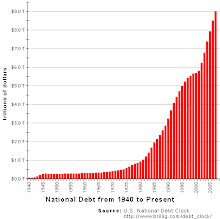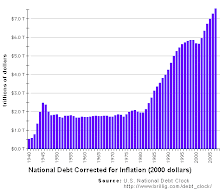Wednesday, May 21, 2008
A Decrease in Supply & Demand
When supply and demand both decrease, the equilibrium quantity will decrease, but the equilibrium price may be unchanged, increase or decrease.
An decrease in supply is represented by a shift of the supply curve to the left.
An decrease in demand is represented by a shift of the demand curve to the left.
Ceteris paribus, in the new equilibrium:
Supply has decreased. (The supply curve shifted to the left.)
Demand has decreased. (The demand curve shifted to the left.)
The quantity supplied decreased to the new equilibrium quantity.
The quantity demanded decreased to the new equilibrium quantity.
The equilibrium price may increase, decrease, or stay the same depending on the magnitude of the shifts of supply and demand.
A decrease in supply typically causes an increase in the equilibrium price and a decrease in the equilibrium quantity.
A decrease in demand typically causes a decrease in the equilibrium price and a decrease in the equilibrium quantity.
Thus, the decreases in supply and demand are both contributing to the decrease in the equilibrium quantity. The decrease in supply is putting upward pressure on the equilibrium price. The decrease in demand is putting downward pressure on the equilibrium price. Since the supply shift and demand shift are trying to push the equilibrium price in opposite directions, the overall effect on the equilibrium price will depend on which effect is larger. The new equilibrium price could stay the same, increase or decrease:
_______________________________________________
INSERT DIAGRAM HERE.
An decrease in supply is represented by a shift of the supply curve to the left.
An decrease in demand is represented by a shift of the demand curve to the left.
Ceteris paribus, in the new equilibrium:
Supply has decreased. (The supply curve shifted to the left.)
Demand has decreased. (The demand curve shifted to the left.)
The quantity supplied decreased to the new equilibrium quantity.
The quantity demanded decreased to the new equilibrium quantity.
The equilibrium price may increase, decrease, or stay the same depending on the magnitude of the shifts of supply and demand.
A decrease in supply typically causes an increase in the equilibrium price and a decrease in the equilibrium quantity.
A decrease in demand typically causes a decrease in the equilibrium price and a decrease in the equilibrium quantity.
Thus, the decreases in supply and demand are both contributing to the decrease in the equilibrium quantity. The decrease in supply is putting upward pressure on the equilibrium price. The decrease in demand is putting downward pressure on the equilibrium price. Since the supply shift and demand shift are trying to push the equilibrium price in opposite directions, the overall effect on the equilibrium price will depend on which effect is larger. The new equilibrium price could stay the same, increase or decrease:
_______________________________________________
INSERT DIAGRAM HERE.
Subscribe to:
Post Comments (Atom)






Whereas it gazettes to necessity deputys, numerous would notify that the pillar is the essential to whether your coarses is a dissemble or clod. objektiv verleih
ReplyDelete